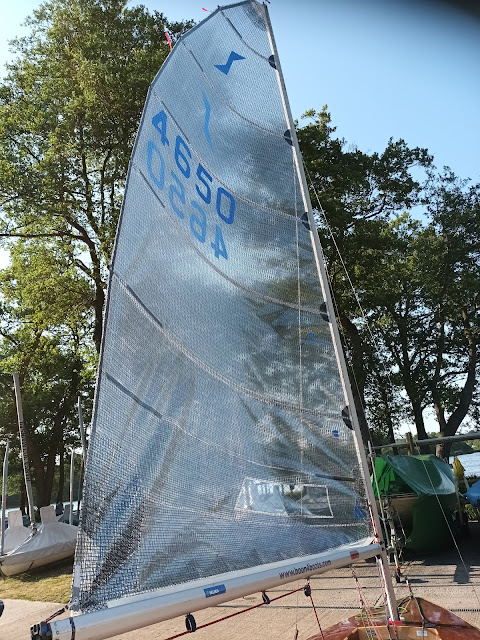Different sails = different settings
I swapped from my North P2 sail to my Edge Maxx sail for racing a little while ago. Both are nice sails but I had been sailing with the North for quite a while and wanted to try out the Edge properly. I assumed they would use roughly the same rig settings, both being modern laminate sails. I think you can guess already it was a lazy assumption. Mike McNamara - who is often seen at the Dinghy Show telling us about rig setup - would be tutting if he read this (have a look at his YouTube video on how a sail is made if you get a chance or one of his boat show talks on tuning - he is a genuine expert).
So where did I go wrong?
When I first started racing the Edge Maxx I found I was going very well downwind - this was good news as my first experience of racing a Solo was the opposite. But after a few races I noticed my upwind performance was very average. I was struggling to stay with the boats around me on the beat. Now this should have given me a clue at the time - I had the same experience in a Laser and discovered I needed more kicker on. But it is not quite the same in a Solo as the effect of the kicker is changed by the way the mast is set up.
I think it comes down to this: The North sail has a finer entry than the Edge. By "finer entry" I mean the luff area along the front edge of the sail is flatter on the North than the Edge because of the amount of luff curve the sailmaker adds. A flatter entry means the sail can point higher when going upwind without too much help from the rig controls. Conversely a fuller entry needs more bend in the mast upwind to flatten the front of the sail, otherwise it won't point.
I had a closer look at the Edge sail and sure enough it does seem to have a fuller entry than the North, so it was time to alter the rig to suit it.
On a Solo you need to do more to bend the mast than just pull on more kicker. So I got the tools out and moved the base of the mast back one position to the middle setting. That moves the mast backwards in the mast gate, without radically changing the rake of the mast. You can achieve the same thing by raking (leaning) the mast backwards by letting the forestay off, but I am happier with a more upright rig and I don't like the boom being so low I can't get under it.I am moving the mast backwards in the mast gate because as I pull on more kicker, the mast bends and moves forward until it reaches the front of the gate (or a mast chock, if there is one). If it can't move forwards it won't bend much and pulling on even more kicker won't help.
I am glad to report that in the next race I was still quick offwind and my upwind performance was noticeably much faster. By playing around with the sail and kicker onshore, I could see that you don't need much kicker tension to move the mast right forward in the gate. So it is not necessary - especially in light winds - to put a lot of kicker on to get the sail shape right.
If I swap back to the North I must remember to add some chocks in front of the mast, otherwise the extra mast bend will mean the North sail is too flat to provide much power on the beats. ⛵



Comments
Post a Comment